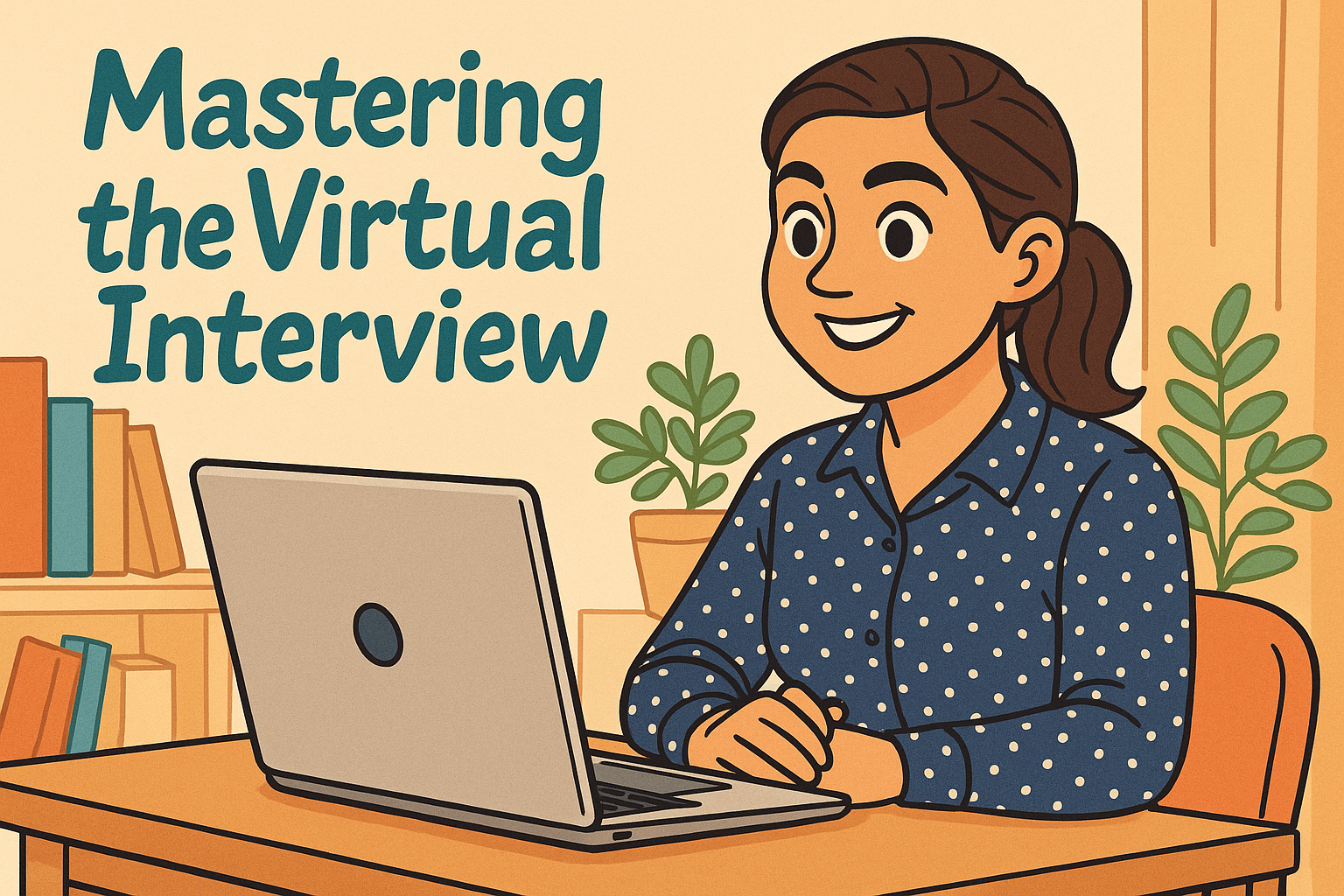In the era of remote work and hybrid hiring, your next job interview is just as likely to be on a screen as in a conference room. Whether you’re applying for a remote position or simply attending the initial round virtually, how you present yourself on a video call matters. The format may have changed, but the stakes remain high — and so do the opportunities to shine. This article breaks down how to prepare confidently for a virtual interview, step by step.
Why Virtual Interviews Are Here to Stay
Virtual or video-based interviews aren’t a temporary trend—they’ve become a standard part of hiring in 2025. Most companies now conduct their first rounds online to streamline recruitment and assess digital communication skills. These interviews allow employers to evaluate not just your answers, but how well you adapt to a virtual environment—testing your tech-readiness and professionalism in one go.
Pre-Interview: Technical & Environmental Setup
Test your tech in advance
Technical glitches are among the most common self-inflicted obstacles in virtual interviews. Here’s your checklist:
- Check your camera and microphone, and test the exact platform (Zoom, Teams, Google Meet) ahead of time.
- Ensure upload/download speeds are sufficient and have a backup option (mobile hotspot or alternate device).
- Position your webcam at eye-level; avoid odd camera angles that undermine your presence.
Create a professional environment
Your surroundings in a virtual interview speak volumes before you say a word:
- Choose a quiet location with minimal background distractions.
- Use good lighting: ideally face a window or position a lamp so your face is well-lit and clear.
Keep a clean, neutral background. Avoid messy rooms or overly bright, busy patterns behind you.
Dress like you’re in-person
Don’t fall for the “lower-half pajamas” temptation just because you’re at home. Dress professionally from head to toe: what you wear affects your mindset and presence. Solid, camera-friendly colors (navy, dark gray, burgundy) fare better, while loud patterns or flashy accessories can distract.
During the Interview: On-Camera Presence & Communication
Eye contact, body language & speaking style
- Look into the camera when speaking, not at the screen—it gives the impression of direct engagement.
- Sit up straight, lean in slightly to show interest, and avoid fidgeting.
- Speak clearly, at a measured pace. Allow a small pause after the interviewer’s question before responding.
Structure your responses & show you’ve done your homework
- Use frameworks like STAR (Situation, Task, Action, Result) or CAR (Challenge, Action, Result) to deliver organized answers.
- Research the company and, if possible, the interviewer. Mentioning something specific shows you’re invested and prepared.
- Have thoughtful questions ready—ask about team priorities, remote workflows, or success metrics for the role.
Leverage small advantages of virtual format
Because you’re remote, you can subtly enhance your performance:
- Keep a copy of your resume and some bullet notes nearby (but out of the camera view).
- Have a glass of water nearby, your device fully charged, and notifications disabled.
End strong — and follow up
- Conclude by reiterating your enthusiasm for the role and asking clearly about next steps.
- Follow up with a thank-you email within 24 hours—mention something specific from the conversation to reinforce your fit and interest.
Common Pitfalls to Avoid
- Don’t ignore your background—messy or distracting environments detract from your message.
- Don’t treat your virtual interview like a casual video chat. Maintain formality, focus, and professionalism.
- Don’t rely entirely on notes or scripts—reading verbatim makes you sound less genuine.
- Don’t panic if the interviewer looks away or takes notes; virtual cues are different and easy to misread.
Why You’ll Stand Out If You Do This Well
- You’ll project confidence, preparedness, and adaptability—traits highly valued in remote or hybrid roles.
- You’ll convert technical competence into presence competence, showing you can thrive virtually.
- Many candidates still neglect these details; by mastering the tech, environment, and etiquette, you’ll gain a major advantage.
Final Word
The virtual interview isn’t just a substitute for in-person—it’s a format with its own rules and opportunities. By mastering your technical setup, environment, presence, and preparation, you’ll make a powerful impression that lasts beyond the call. In today’s remote-first world, showing you can connect confidently through the screen is often what sets you apart.
FAQ
Q: Can I use notes during a virtual interview?
A: Yes—but discreetly. Keep bullet points out of camera frame and avoid reading word-for-word.
Q: What if my internet connection drops?
A: Test your speed beforehand and have a backup (like a hotspot). If disconnected, rejoin quickly and stay calm.
Q: How should I position my webcam?
A: Keep it at or slightly above eye level. Frame yourself with head and shoulders visible, leaving a little space above your head.
Q: What kind of questions should I ask at the end?
A: Ask about success metrics, team collaboration, or company culture—avoid easily searchable topics.
Q: Do I really need to send a thank-you email?
A: Absolutely. A personalized follow-up within 24 hours demonstrates professionalism and enthusiasm.
Sources
- 9 Virtual Interview Tips to Get You to the Next Round (2025) – Questrom Feld Center
- 6 Expert Tips to Ace Your Next Virtual Interview – The Jonus Group
- Virtual Interview Etiquette for 2025 Job Seekers – Impacteers
- How to Prepare for a Virtual Interview in 2025 – Work Wise Blog
- Top 10 Expert Tips to Ace Your Virtual Interview in 2025 – Talents Jobs
- How to Prepare for a Virtual Job Interview – Resume Captain
- Virtual Interview Guide 2025 – Neothi
- 8 Crucial Virtual Interview Tips to Master in 2025 – AsyncInterview

